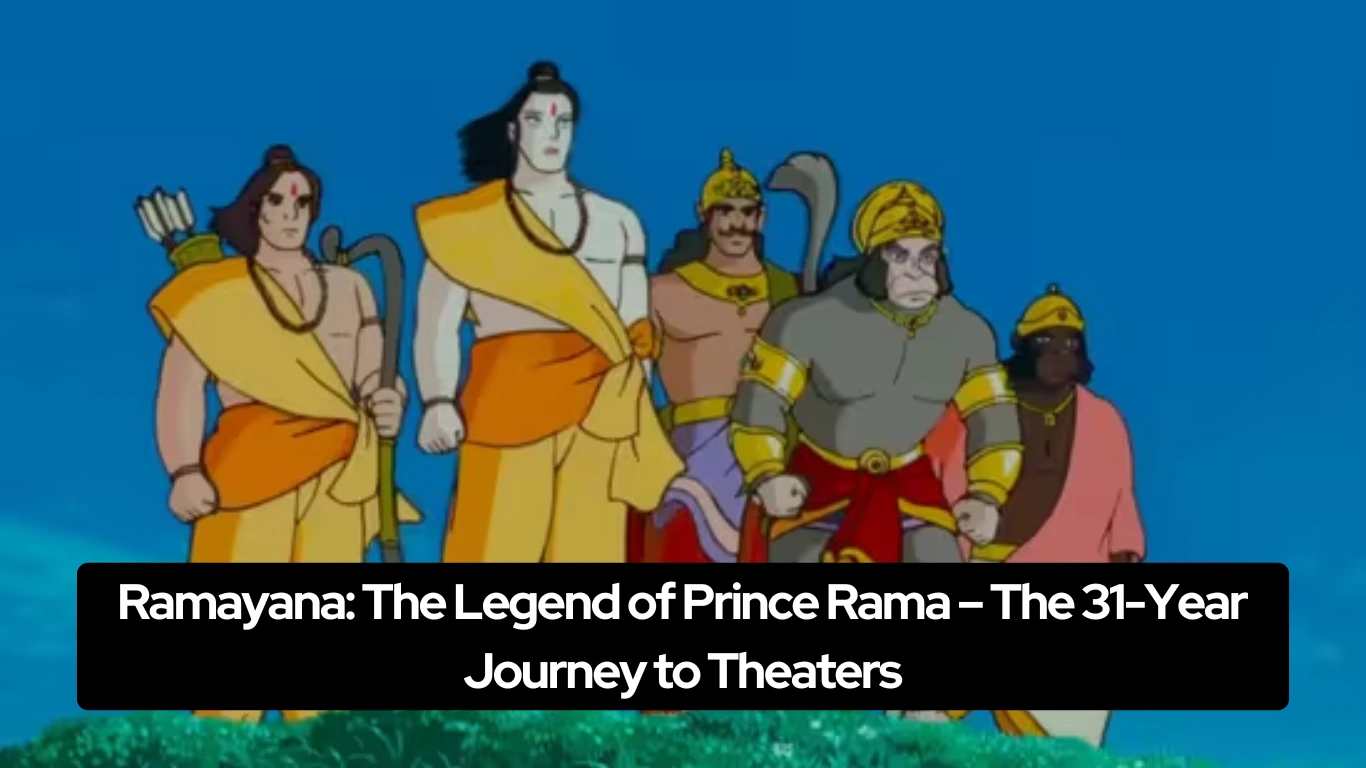After 31 years, the iconic animated film Ramayana: The Legend of Prince Rama is making a grand comeback in Indian theaters. Originally released in 1992, this Indo-Japanese collaboration is now being reintroduced by Farhan Akhtar’s production company in partnership with Geek Pictures India and AA Films. But what makes this film so unique? And why was it banned in India? Let’s explore the fascinating story behind this film’s creation, the reasons for its ban, and why it’s back in theaters after all these years.
A Unique Collaboration Between Japan and India
Ramayana: The Legend of Prince Rama is a beautifully animated retelling of one of India’s most cherished epics, the Ramayana. Directed by Japanese filmmaker Yugo Sako and Indian animator Ram Mohan, the film blends Japanese animation techniques with Indian storytelling, creating a visual spectacle that captured the essence of the epic.
This collaboration involved over 450 artists from both countries and remains the first animated film based on the Ramayana. The film vividly portrays Lord Rama’s heroic journey to rescue his wife Sita from the demon king Ravana, bringing to life the themes of devotion, valor, and righteousness that have resonated with audiences for centuries.
Why Is the Film Returning Now?
The re-release of Ramayana: The Legend of Prince Rama is stirring excitement among those who remember the original film and new audiences who will experience it for the first time. With its upcoming release just ahead of Diwali, a festival deeply connected to the Ramayana, the timing couldn’t be more fitting.
Farhan Akhtar, along with his team, is ensuring that this film reaches a wider audience by offering it in multiple languages, including Hindi, English, Tamil, and Telugu. Hindi audiences will also get to hear the familiar voices of Arun Govil, who played Lord Rama in the Ramayan TV series, and legendary actor Amrish Puri, who voiced Ravana.
Why Was the Film Banned in India?
When Ramayana: The Legend of Prince Rama was first released, it faced significant resistance in India, leading to its ban. Here’s why:
- Cultural Sensitivities: The fact that a sacred Indian epic was being animated by a Japanese production team upset some groups. The Vishva Hindu Parishad (VHP) voiced strong objections, feeling that an external country should not depict such a significant Indian story.
- Sensitive Timing: The film’s release coincided with the Ram Janmabhoomi movement, a period of religious and political unrest in India. Due to this highly sensitive atmosphere, the Indian government was wary of approving an animated retelling of Lord Rama’s life, fearing that it could ignite further controversy.
- Animation Format: For many Indians, the idea of portraying a revered figure like Lord Rama through animation was deemed disrespectful. The epic’s religious significance made it difficult for some to accept a cartoonish interpretation, no matter how respectful the creators’ intentions were.
These factors, combined with the turbulent political climate at the time, led to the film being pulled from theaters. However, it was later shown on television and garnered a loyal following over the years.
The Voices Behind the Characters
One of the most memorable aspects of the film is the voice acting. In the Hindi version, Arun Govil, who played Lord Rama in the popular TV adaptation of Ramayan, provided the voice for the animated Lord Rama. Amrish Puri, known for his powerful roles, lent his voice to Ravana, bringing an extra layer of gravitas to the character. Their performances added depth and authenticity to the animated film, making it even more relatable for Indian audiences.
A Second Chance for a Timeless Tale
Over the years, Ramayana: The Legend of Prince Rama has earned a reputation as a visually stunning and faithful adaptation of the epic. When compared to more recent mythological films, such as Adipurush, audiences have praised the 1992 version for its simplicity, sincerity, and artistic integrity. The re-release offers a fresh opportunity for modern audiences to experience this cinematic gem on the big screen, celebrating the enduring appeal of Ramayana and its message of good triumphing over evil.
Conclusion
After 31 years, Ramayana: The Legend of Prince Rama is more than just a film—it’s a celebration of collaboration, culture, and the timeless story of Lord Rama. Its return to theaters marks a chance for both older audiences to relive a classic and for newer generations to experience a beautifully crafted retelling of one of India’s greatest epics. Be sure to catch this captivating journey when it releases on October 18, just in time for Diwali, and let the legend of Lord Rama inspire once more.

